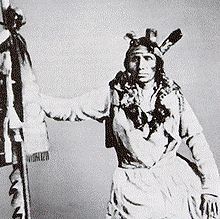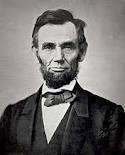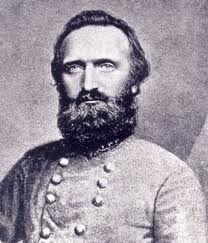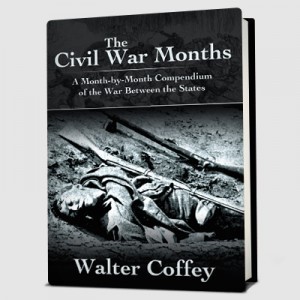Walter Coffey's Blog, page 200
August 24, 2012
Lincoln and Greeley

New York Tribune Editor Horace Greeley
The Dakota Sioux uprising, recent Confederate victories, and rumors of slave emancipation was hurting President Abraham Lincoln’s popularity in the North. One of Lincoln’s most prominent critics was influential New York Tribune editor Horace Greeley, who published an open letter in his newspaper called “The Prayer of Twenty Millions.”
In the letter, Greeley questioned Lincoln’s policies, especially those concerning slavery: “We complain that the Union cause has suffered… from mistaken deference to Rebel slavery… All attempts to put down the Rebellion and at the same time uphold its inciting cause are preposterous and futile.”
Two days later, Lincoln publicly responded to Greeley’s letter, reiterating the objective he had stated in his inaugural address of March 1861: “My paramount object in this struggle is to save the Union… I would save it the shortest way under the Constitution. The sooner the national authority can be restored; the nearer the Union will be ‘the Union as it was.’… If I could save the Union without freeing any slave I would do it, and if I could save it by freeing all the slaves I would do it; and if I could save it by freeing some and leaving others alone I would also do that…”
August 22, 2012
From the Jefferson Civil War Symposium
My wife Gianna and I had a wonderful time meeting new people and signing books at  the Civil War Symposium in Jefferson, Texas this past Saturday, Aug. 18.
the Civil War Symposium in Jefferson, Texas this past Saturday, Aug. 18.
 The symposium included several speakers who discussed the role of eastern Texas during and after the war, Jefferson in particular. Some of the information is detailed in the ”Eastern Texas Campaign” sections of my book, The Civil War Months.
The symposium included several speakers who discussed the role of eastern Texas during and after the war, Jefferson in particular. Some of the information is detailed in the ”Eastern Texas Campaign” sections of my book, The Civil War Months.
This was our first trip to northeastern Texas, and Gianna and I were greeted to good food and warm southern hospitality! The symposium was the first event of its kind in Jefferson, and we hope to be invited to future events. Hats off to Jefferson!
August 19, 2012
This Week in the Civil War: Aug 13-19, 1862
Wednesday, Aug 13: Preliminary orders were issued to move General Robert E. Lee’s Confederate Army of Northern Virginia from the Virginia Peninsula to positions north of Richmond to confront General John Pope’s Federal Army of Virginia. On the Potomac River, two steamers collided and killed 73 people, most of whom were convalescing soldiers from the Federal Army of the Potomac.
Thursday, Aug 14: In Washington, President Abraham Lincoln greeted a group of free blacks at the White House. Lincoln reiterated his support for colonizing blacks in Africa, stating, “But for your race among us there could not be war… It is better for us both, therefore, to be separated.”
Friday, Aug 15: Skirmishing occurred at Clarendon, Arkansas, and a Federal expedition was conducted in Virginia from Fredericksburg to Port Royal.
Saturday, Aug 16: General George McClellan’s Federal Army of the Potomac completed its evacuation of the Virginia Peninsula, moving to positions in Virginia at Aquia Creek and Alexandria to support John Pope’s new Federal army. General Edmund Kirby Smith’s Confederate Army of Kentucky advanced north from Tennessee into Kentucky via the Cumberland Mountains. Confederate raiders defeated Federals at Lone Jack, Missouri but were driven off by Federal reinforcements. A Federal gunboat expedition on the Mississippi River captured a Confederate steamer at Milliken’s Bend. Federal naval vessels bombarded Corpus Christi, Texas.
Sunday, Aug 17: In southwestern Minnesota, Sioux Indians began a revolt due to lack of promised food and supplies on government-assigned reservations. The Indians murdered several settlers at Acton, Minnesota.
Monday, Aug 18: In Virginia, John Pope moved his Federals back to the Rappahannock River to await George McClellan’s reinforcements as Robert E. Lee’s Confederates advanced north. In Richmond, the Confederate Congress assembled; President Jefferson Davis delivered a message stating that latest events “give assurance to the friends of constitutional liberty of our final triumph in the pending struggle against despotic usurpation.” In Tennessee, Federals surrendered Clarksville without a fight; their commander was later dismissed from the Army. In Minnesota, the Sioux Indians ambushed settlers and Federal troops near Redwood Ferry and Fort Ridgely; survivors fled to the fort for protection as their homes were pillaged and burned.
Tuesday, Aug 19: Federals began an expedition against the Snake Indians in the Idaho Territory that lasted until 11 October. In Minnesota, Sioux Indians bypassed Fort Ridgely and advanced on New Ulm, burning and pillaging as they went. General Horatio Wright was given command of the new Federal Department of the Ohio. A letter was published in the New York Tribune by editor Horace Greeley called “The Prayer of Twenty Millions.” In it, Greeley challenged President Lincoln’s stance on slavery: “We complain that the Union cause has suffered… from mistaken deference to Rebel slavery.”
Primary source: The Civil War Day by Day by E.B. Long and Barbara Long; Da Capo Press, New York, NY, 1971
August 17, 2012
Jefferson Civil War Symposium
I will be signing books at the Civil War Symposium at the Jefferson Historical Museum in Jefferson, Texas tomorrow, August 18. This is the first Civil War event at the museum, and it will feature guest lecturers and rare artifacts. I’m looking forward to my first visit to historic Jefferson! Click HERE for more information; hope to see you there!
August 15, 2012
The Dakota War

Dakota Chief Little Crow
As the Civil War raged, the Dakota Sioux Indians rebelled against U.S. authority in Minnesota. The uprising was the result of Indian hardships suffered due to U.S. treaty violations and inadequate provisions on government reservations. The Indians killed settlers and held off small Federal forces. Dakota Sioux forces clashed with Federals at
the Upper Sioux Agency, while Sioux warriors murdered five settlers near Acton.
The Indians’ plan was to drive U.S. settlers along the Minnesota River out of the region.
At the Battle of Lower Sioux Agency, Dakota Chief Little Crow attacked settlements and burned buildings as settlers escaped across the river. The Minnesota state militia were defeated at the Battle of Redwood Ferry, and the Indians continued their onslaught. Settlers attacked at New Ulm fled to fortified Fort Ridgely, which the Dakota could not penetrate.
An estimated 40,000 U.S. settlers fled their homes and as many as 800 were killed in this Indian uprising. Federal army units who were diverted from the war defeated the Dakota at Wood Lake. Although Little Crow vowed to continue the offensive, Federal forces began a pursuit of the retreating Indians that continued into September.
August 13, 2012
Union Politics in August 1862

U.S. President Abraham Lincoln
Military recruitment increased in the North after President Lincoln called for drafting 300,000 militia to serve nine months. Radical Republicans in Congress supported freeing slaves and inducting them into the military, but most northerners opposed such policies. Nevertheless, Lincoln was presented with two black regiments from Indiana, and Secretary of War Edwin M. Stanton authorized the Southern Department to “receive into the service of the United States” up to 5,000 soldiers to be trained and used for guarding plantations and settlements.
Receiving a deputation of free blacks at the White House, Lincoln declared that he was not prepared to enlist blacks as soldiers, but they could be used as army laborers. Lincoln reiterated his support for colonizing freed slaves in Africa or Central America, and he pledged to help the deputation with this project. Lincoln said, “But for your race among us there could not be war… It is better for us both, therefore, to be separated.”
August 12, 2012
This Week in the Civil War: Aug 6-12, 1862
Wednesday, Aug 6: The ironclad C.S.S. Arkansas was attacked by four Federal vessels on the Mississippi River at Baton Rouge, Louisiana. Arkansas became an easy target when her engines failed once more. Badly damaged, Arkansas fought back despite raging fires on board. The crew finally abandoned ship and destroyed her to prevent her from falling into enemy hands. This was the last time that Confederates attempted to put an ironclad on the Mississippi. Despite her short life, Arkansas had become a legend in the river war.
Thursday, Aug 7: In the New Mexico Territory, Federals near Fort Fillmore defeated Confederates retreating from Santa Fe. In Blackburn, England, a public meeting supported recognizing the Confederate States of America because “it was impossible for the North to vanquish the South.”
Friday, Aug 8: The Federal War Department issued orders to prevent evasion of military duty and for suppression of disloyal activities. Arrests were made in Baltimore to prevent those trying to evade the draft from leaving the area. In response to Confederate guerrilla attacks on Federal trains in Huntsville, Alabama, Federals ordered local pro-secessionist clergymen to be placed on each train. In England, Prime Minister Lord Palmerston declared that the British would continue observing “a strict and rigid neutrality.”
Saturday, Aug 9: The Battle of Cedar Mountain took place in northern Virginia, as Robert E. Lee’s Confederates probed to find the new Federal Army of Virginia under John Pope. The battle was ill fought on both sides, but it indicated to Lee that Pope was moving south. This news, combined with news that Federals under George McClellan were abandoning the Virginia Peninsula, prompted Lee to shift his troops northward to face Pope.
Sunday, Aug 10: The Confederate steamer General Lee was captured near Fort Pulaski at Savannah, Georgia. Skirmishing occurred at various places in Missouri and Texas.
Monday, Aug 11: Confederate guerrillas captured Independence, Missouri in a daring raid. At Corinth, Mississippi, General Ulysses S. Grant ordered that fugitive slaves coming into his lines be employed in various departments.
Tuesday, Aug 12: Confederate raiders under John Hunt Morgan captured Gallatin, Tennessee and a Federal garrison. Federal expeditions left Fort Leavenworth, Kansas and Camp Gamble, Missouri to hunt down Confederate guerrillas. Confederate ships Elma and Hannah were burned to avoid Confederate capture at Corpus Christi, Texas.
Primary source: The Civil War Day by Day by E.B. Long with Barbara Long; Da Capo Press, New York, NY, 1971
August 9, 2012
The Battle of Cedar Mountain

Confederate General Thomas "Stonewall" Jackson
In northern Virginia, Federals under John Pope advanced on Orange Court House and Gordonsville. Assessing that George McClellan was no longer a threat, Confederate General Robert E. Lee planned to demolish Pope before returning his attention to McClellan. Lee sent Stonewall Jackson to attack Pope south of Culpeper. However, Federals under Nathaniel Banks ambushed Jackson at Cedar Mountain.
The Federals pushed Jackson back until Confederates under A.P. Hill arrived to turn the tide and force Banks to withdraw. This battle indicated that Pope was moving south toward Richmond. This news, coupled with news that McClellan was abandoning the Peninsula, prompted Lee to move his entire Army of Northern Virginia north to confront Pope.
August 6, 2012
The Civil War Months : A Month-by-Month Compendium of the War Between the States
 2012 is the second of four years marking the 150th anniversary of the Civil War. The war is the most important event in our nation’s history, and my latest book, The Civil War Months, traces all the key events of the war in a month-by-month format. The book’s introduction examines the true causes of the war, which are in the excerpt below:
2012 is the second of four years marking the 150th anniversary of the Civil War. The war is the most important event in our nation’s history, and my latest book, The Civil War Months, traces all the key events of the war in a month-by-month format. The book’s introduction examines the true causes of the war, which are in the excerpt below:
Many historians cite slavery as the primary cause of the War Between the States. However, slavery was a byproduct of the true cause, which has been the cause of most conflicts throughout history: money and politics.
In 1860-1861, eleven southern states broke from the U.S. to form their own nation, both to free themselves from disproportionate taxation through import tariffs that protected northern industry at the expense of southern agriculture (money), and to assert their right to secede when the Federal government becomes too oppressive to their interests (politics).
Since America’s founding, tariffs on imported goods had been the primary source of Federal revenue. Southerners had consistently opposed high tariffs; the South relied more heavily on imports than the North, and foreign trading partners tended to raise prices to offset the tariff increases. Conversely, northerners had consistently pushed for higher tariffs to protect domestic manufacturing—mostly located in the North—from foreign competition.
The Industrial Revolution and poor European living conditions prompted millions of immigrants to come to America seeking jobs and homesteads, and most settled in the northern manufacturing centers. In turn, northern industrialists sought to advance their interests by lobbying the Federal government for various favors such as taxes on foreign competitors, free homesteads to settlers, centralization of the money supply, and taxpayer-funded subsidies to businesses.
While the northern economy was rapidly changing, the southern economy continued its main reliance on plantation farming carried out by slave labor. Southerners rigidly opposed the northern lobby in Washington, instead favoring the founders’ idea of a decentralized Federal government that dispersed more power to the states and the people. Southerners supported low taxes and free trade, and they opposed special favors such as giving tax dollars to preferred businesses.



